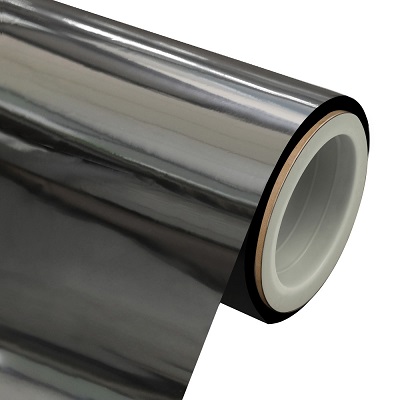High Barrier Materials commonly used in China
Abstract: commonly used high barrier materials in China are: 1. Aluminum foil; 2. Aluminized film; 3. EVOH five layer coextrusion film; 4. PVDC coating film; 5. Silicon oxide film and alumina film; 6. New high barrier materials
1. Aluminum foil
Advantages: the best barrier performance, can cook, can effectively block UV.
Disadvantages: opaque, poor folding resistance, high cost, can not be used for microwave heating.
In 2004, the total consumption of this kind of high-temperature packaging materials is about 1.1 billion grams per package. As the metal layer (aluminum foil) in these packaging materials is not easy to degrade, and the aluminum foil in composite materials is not able to be separated in China at present. As a result, the waste of paper plastic aluminum structure composite material and plastic aluminum structure composite material can not be recycled and reused, and can not be burned, which is very harmful to environmental protection.
2. Aluminized film
Advantages: folding resistance is better than aluminum foil, barrier performance can be close to aluminum foil, UV can be blocked, aluminum plating processing cost is low.
Disadvantages: opaque, poor coating strength (aluminum layer is easy to fall off after water), can not be used for microwave heating.
3. EVOH five layer coextrusion film
Advantages: it has excellent barrier performance, excellent oil and organic solvent resistance, antistatic performance, and can be recycled. Only CO2 and H2O are produced during incineration. It is an excellent green environmental protection packaging material.
Insufficient: when the ambient humidity is more than 50%, the barrier performance becomes worse rapidly, so it is not suitable to be used alone. Because the investment of imported EVOH resin and multi-layer coextrusion equipment are very expensive, the product cost is very high.
4. PVDC coating film
Advantages: at the same time, it has good performance of blocking oxygen and water vapor, and the coating can be heat sealed with low cost. Disadvantages: coating needs special equipment; it can't be recycled by melting granulation, and wastes will produce toxic and harmful substances such as hydrogen chloride and dioxin during incineration.
5. Silicon oxide film and alumina film
Silicon oxide and alumina films have good transparency, excellent oxygen resistance and humidity resistance. However, due to the extremely expensive equipment investment and the high difficulty of processing technology, the product cost is very high. At present, there is no production unit in China, and there are few products imported from abroad.
6. New high barrier materials
Modified polyvinyl alcohol (PVA) coating film
(1) Excellent oxygen resistance
The modified polyvinyl alcohol (PVA) coating composite film has excellent barrier properties to oxygen, nitrogen, hydrogen and carbon dioxide. Its oxygen resistance is better than PVDC (polyvinylidene chloride) coating film, and better than EVOH (ethylene vinyl alcohol copolymer) five layer coextrusion film. Its oxygen resistance is the best among all kinds of resin films, comparable to aluminum foil, glass, alumina film and silicon oxide film.
Comparison of oxygen resistance of several materials. Unit: cm3 / (M2 · 24h · 0.1MPa).
(2) Low cost
The production cost of polyvinyl alcohol (PVA) coating composite film is much lower than that of paper aluminum plastic composite and aluminum plastic composite packaging material, far lower than the production cost of EVOH five layer coextrusion film, and also lower than the cost of composite film with PVDC coating.
(3) It is easy to use
Using the existing dry laminating machine, coating machine, wet laminating machine, extrusion laminating machine and other equipment of each flexible packaging production enterprise can achieve satisfactory results. The modified PVA adhesive does not crust, and the viscosity does not increase obviously during normal use. The coating layer is very thin, but the thickness uniformity of the coating is still good.
(4) First class environmental protection
Polyvinyl alcohol (PVA) high barrier coating liquid is composed of carbon, oxygen, hydrogen and silicon. It can be degraded and recycled. When burned, it only generates carbon dioxide and water, and does not produce other substances harmful to the environment and human health. It is a very ideal environment-friendly high barrier packaging material.
(5) Good aroma retention
It can keep the original flavor of the food in the bag for a long time, and effectively prevent the odor outside the packaging material from entering the bag.
(6) Others
Colorless and transparent.
It has excellent oil resistance and organic solvent resistance.
It has good antistatic performance.
It can be used for microwave heating and metal detection of packaged food.
Due to the addition of nano inorganic powder into PVA water-borne coating solution, the water resistance, UV and IR light reflection, wear resistance, penetration resistance, and adhesion strength between PVA coating and substrate film have been significantly improved.
1. Aluminum foil
Advantages: the best barrier performance, can cook, can effectively block UV.
Disadvantages: opaque, poor folding resistance, high cost, can not be used for microwave heating.
In 2004, the total consumption of this kind of high-temperature packaging materials is about 1.1 billion grams per package. As the metal layer (aluminum foil) in these packaging materials is not easy to degrade, and the aluminum foil in composite materials is not able to be separated in China at present. As a result, the waste of paper plastic aluminum structure composite material and plastic aluminum structure composite material can not be recycled and reused, and can not be burned, which is very harmful to environmental protection.
2. Aluminized film
Advantages: folding resistance is better than aluminum foil, barrier performance can be close to aluminum foil, UV can be blocked, aluminum plating processing cost is low.
Disadvantages: opaque, poor coating strength (aluminum layer is easy to fall off after water), can not be used for microwave heating.
3. EVOH five layer coextrusion film
Advantages: it has excellent barrier performance, excellent oil and organic solvent resistance, antistatic performance, and can be recycled. Only CO2 and H2O are produced during incineration. It is an excellent green environmental protection packaging material.
Insufficient: when the ambient humidity is more than 50%, the barrier performance becomes worse rapidly, so it is not suitable to be used alone. Because the investment of imported EVOH resin and multi-layer coextrusion equipment are very expensive, the product cost is very high.
4. PVDC coating film
Advantages: at the same time, it has good performance of blocking oxygen and water vapor, and the coating can be heat sealed with low cost. Disadvantages: coating needs special equipment; it can't be recycled by melting granulation, and wastes will produce toxic and harmful substances such as hydrogen chloride and dioxin during incineration.
5. Silicon oxide film and alumina film
Silicon oxide and alumina films have good transparency, excellent oxygen resistance and humidity resistance. However, due to the extremely expensive equipment investment and the high difficulty of processing technology, the product cost is very high. At present, there is no production unit in China, and there are few products imported from abroad.
6. New high barrier materials
Modified polyvinyl alcohol (PVA) coating film
(1) Excellent oxygen resistance
The modified polyvinyl alcohol (PVA) coating composite film has excellent barrier properties to oxygen, nitrogen, hydrogen and carbon dioxide. Its oxygen resistance is better than PVDC (polyvinylidene chloride) coating film, and better than EVOH (ethylene vinyl alcohol copolymer) five layer coextrusion film. Its oxygen resistance is the best among all kinds of resin films, comparable to aluminum foil, glass, alumina film and silicon oxide film.
Comparison of oxygen resistance of several materials. Unit: cm3 / (M2 · 24h · 0.1MPa).
(2) Low cost
The production cost of polyvinyl alcohol (PVA) coating composite film is much lower than that of paper aluminum plastic composite and aluminum plastic composite packaging material, far lower than the production cost of EVOH five layer coextrusion film, and also lower than the cost of composite film with PVDC coating.
(3) It is easy to use
Using the existing dry laminating machine, coating machine, wet laminating machine, extrusion laminating machine and other equipment of each flexible packaging production enterprise can achieve satisfactory results. The modified PVA adhesive does not crust, and the viscosity does not increase obviously during normal use. The coating layer is very thin, but the thickness uniformity of the coating is still good.
(4) First class environmental protection
Polyvinyl alcohol (PVA) high barrier coating liquid is composed of carbon, oxygen, hydrogen and silicon. It can be degraded and recycled. When burned, it only generates carbon dioxide and water, and does not produce other substances harmful to the environment and human health. It is a very ideal environment-friendly high barrier packaging material.
(5) Good aroma retention
It can keep the original flavor of the food in the bag for a long time, and effectively prevent the odor outside the packaging material from entering the bag.
(6) Others
Colorless and transparent.
It has excellent oil resistance and organic solvent resistance.
It has good antistatic performance.
It can be used for microwave heating and metal detection of packaged food.
Due to the addition of nano inorganic powder into PVA water-borne coating solution, the water resistance, UV and IR light reflection, wear resistance, penetration resistance, and adhesion strength between PVA coating and substrate film have been significantly improved.
Disadvantages: due to the thin coating, the heat sealing property of the coating is poor; although the PVA coating is modified, its sensitivity to water is obviously reduced. In order to maintain the best oxygen resistance effect, it is better to protect the PVA coating with polyolefin plastic film (such as BOPP, CPP, PE, etc.).

